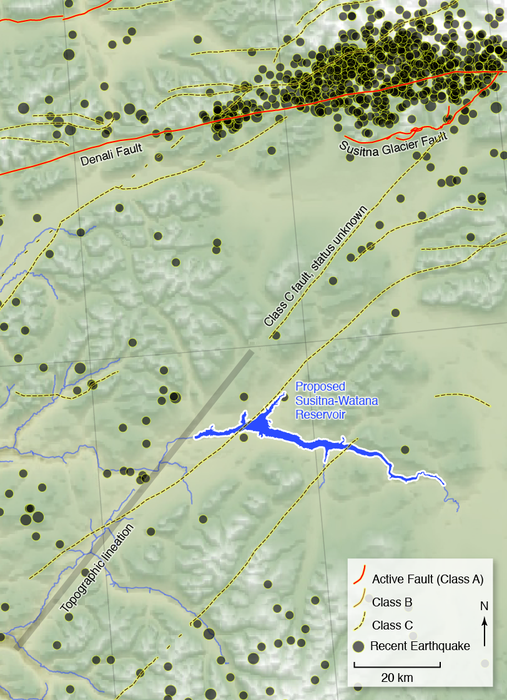Tectonics near the proposed Susitna-Watana Reservoir

The Susitna Glacier Fault and the Denali Fault ruptured nearly simultaneously in 2002 to produce a M 7.9 earthquake. A prominent topographic lineation and mapped fault extend southwest from the eastern end of the Susitna Glacier Fault. It is likely that the topographic lineation is the result of faulting. Given this likely fault branches from an active fault, and passes very near the river rapids at Watana, it is plausible that an active fault extends along this lineation and will present a key challenge for engineers.
Geologists map faults as active (Class A), likely-to-be-active (Class B), and unknown (Class C). A fault known to be active will produce earthquakes in the future. However, major earthquakes have often occurred on faults not previously identified as active, if identified at all. Alaska has many known faults, and frequently experiences shallow (<35 km depth) earthquakes for which no fault has yet been identified.